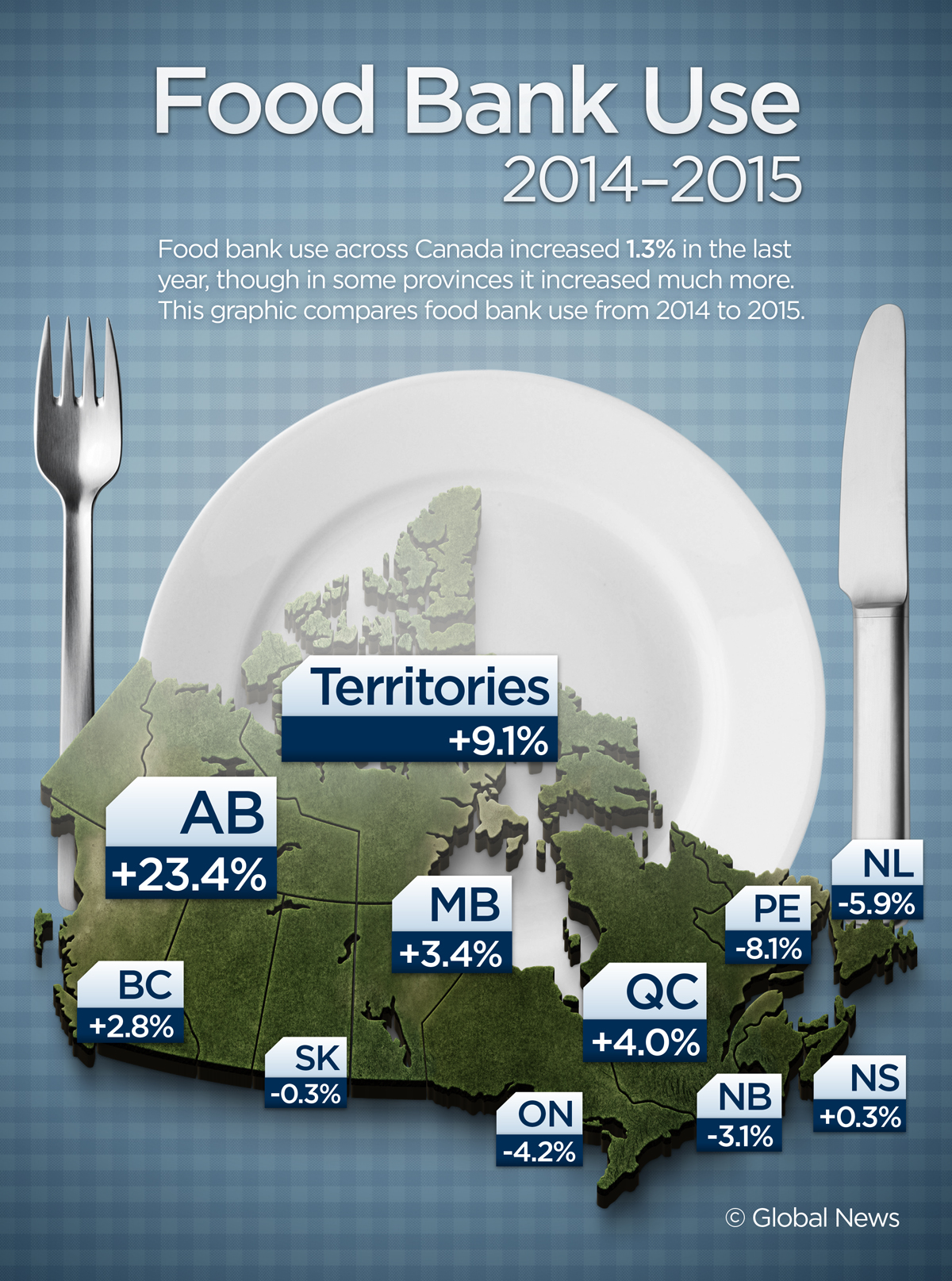A new report projecting a rise in food prices in 2016 is creating more concern for food bank operators as they already struggle to keep up with growing demand.

Food Banks Canada, which represents the food bank community, says an increase in prices will not only stretch already thin budgets across the country but could impact donations.
READ MORE: Canadian grocery prices will continue to skyrocket next year
The University of Guelph’s Guelph’s Food Institute report expects food prices to rise between two and four per cent over the next year. Fruits and vegetables could also see a significant increase of two to 4.5 per cent, and seafood could see a one to three per cent increase according to the report.
Canadian households, the report suggests, could spend an extra $345 on their grocery bills.
Food Banks Canada recently released its annual HungerCount report and counted 852,137 Canadians who visited a food bank in March, 2015 – up 1.3 per cent from March 2014.
The highest increase in food bank use was in Alberta where a slowdown in the oil and gas industry has hit households hard. Food banks there saw 67,443 visitors in March, 2015. An 23.4 per cent increase from the previous March.

Get breaking National news
READ MORE: Food bank visits spike across Canada – in Alberta most of all
Deborah Hamp, director of operations at the Saskatoon Food Bank and Learning, says the rising cost of food has been a concern for a number of years.
“Rising food prices along with the rising cost of housing is really putting people in a tough position,” said Hamp. “The larger story is that the cost of food, the cost of rent and inadequate minimum wage that really there needs to be a national strategy for poverty reduction.”
According to the HungryCount report, Food bank use in Saskatchewan has been flat since last year, while it dropped in Ontario, Prince Edward Island, New Brunswick and Newfoundland and Labrador.
The Liberals pledged during the recent federal election campaign to bring down the cost of food in the Territories, and promised money to build more affordable housing across the country. However, in their throne speech they offered few specifics on funding for more affordable housing or tackling food security.
“We need systemic changes to create communities where food banks aren’t needed,” said Hamp.







Comments